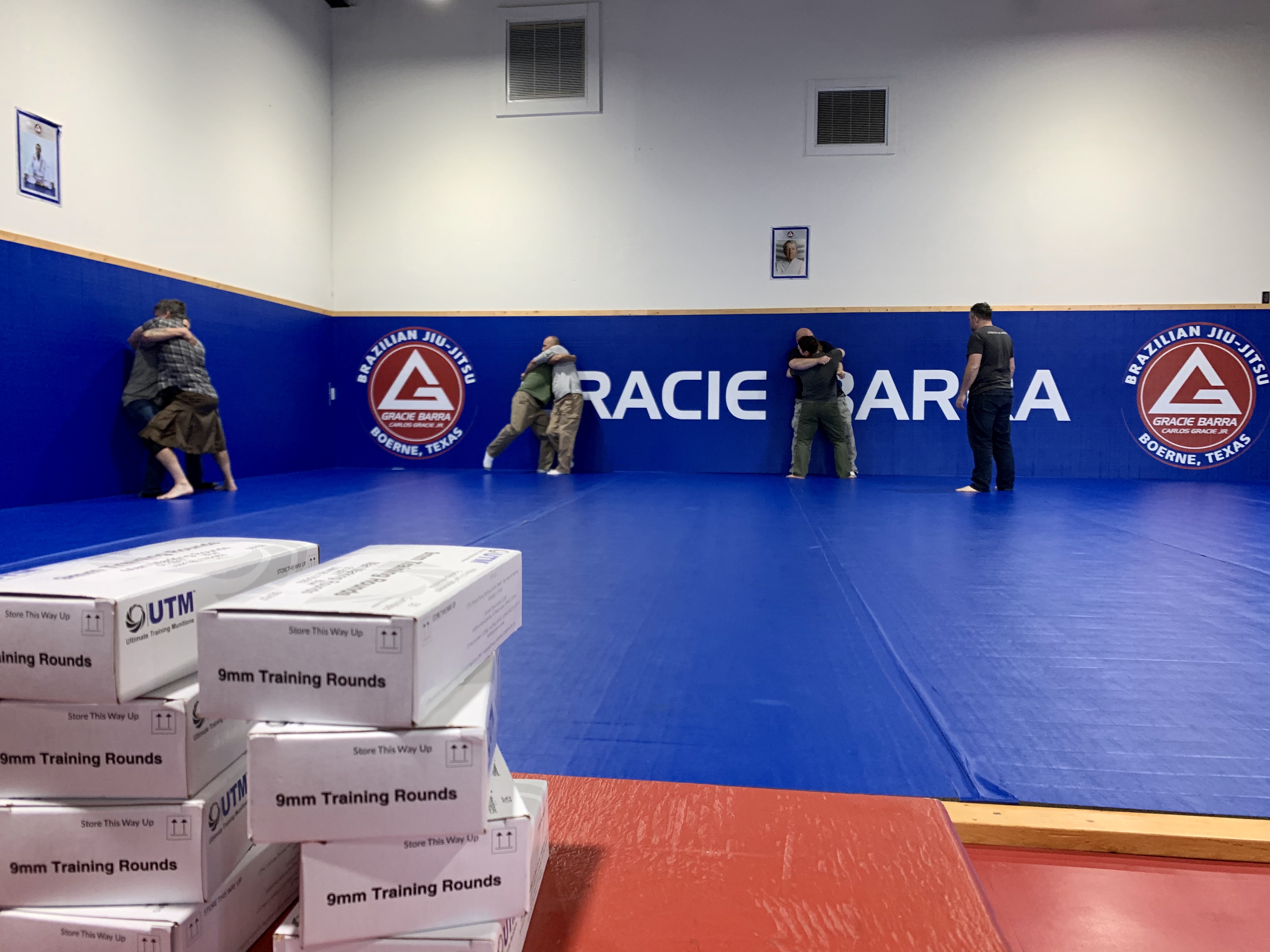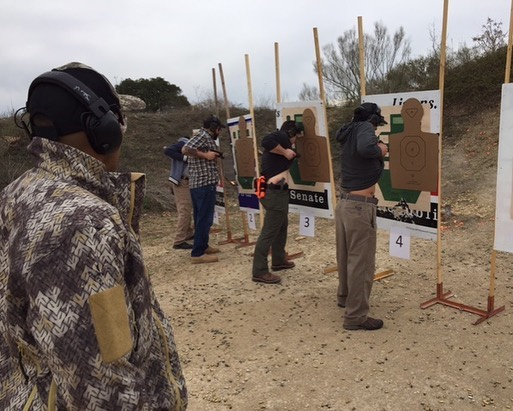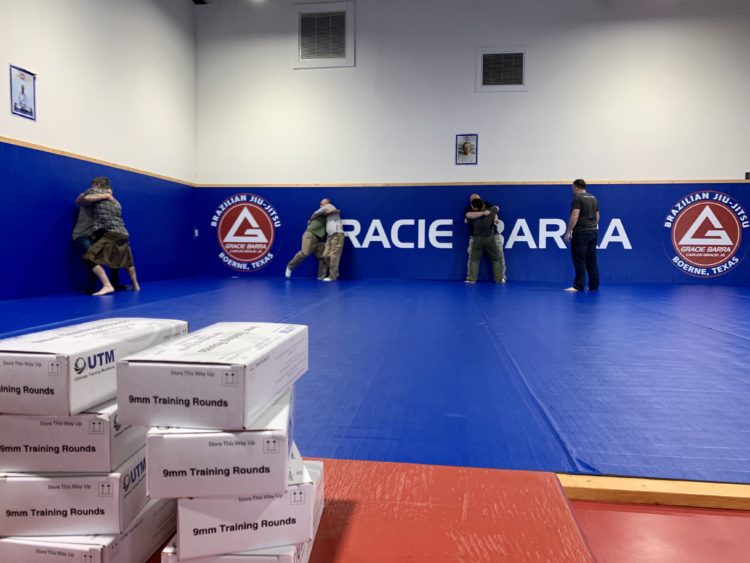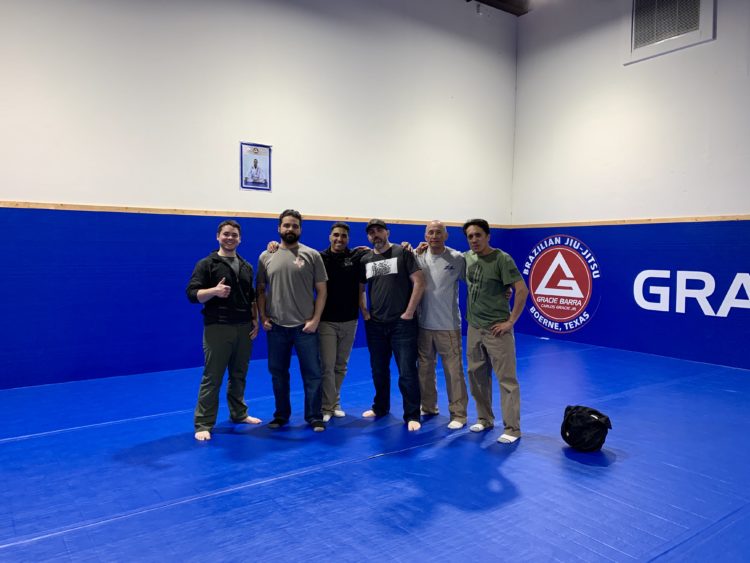Integrated Combatives for Concealed Carry Instructor Notes
Class Overview:
The morning started at the range at the Bandera Gun Club in Bandera, Texas. The first order(s) of business was conducting administrative paperwork, medical/safety brief, along with class introductions.
The class had seven students in total. Five out of seven carried a Glock variation. One student carried a 1911 and the other student carried a Sig P365.
Of note, two students are firearms instructors themselves and two students were active LE. No active Military in attendance for the class.
Objective:
The terminal learning objective was to give students that carry a concealed firearm for self-defense the physical skills necessary to establish physical controls on possible violent criminal actors, allow students to target discriminate, while also having the ability to escalate and deescalate force as needed.
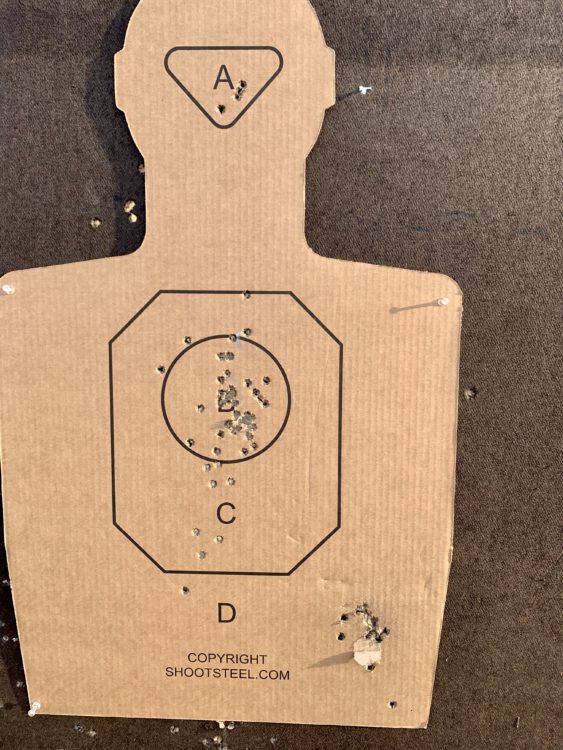
If the student is presented with a lethal threat, they will have the ability to establish physical control on that lethal threat denying access to weaponry or being able to severely diminish the ability of the lethal threat to exercise their intent to kill.
The three rules given to the students as far as fighting within this distance against a violent criminal actor that may or may not be armed is controlled the weapon, fight for position, and do damage at every opportunity. The rules have to be followed in that order and because of the dynamic nature of these types of confrontations the rules have to also be followed at the same time.
For clarity, this means that before anything can be done control of the opposing force MUST be established before anything else can take place and every draw stroke will be earned as opposed to frantically rushed to as a proverbial safety blanket.
The SIRT pistol serves as a great visual training aid when the thumb pectoral index versus rock and lock magazine index demonstration was done.
The other visual training aid used for this course was the Shootsteel.com training targets. While the IDPA cardboard targets were/are much easier and cheaper than the Shoot Steel training targets In the October 2019 Rangemaster Newsletter Tom Givens had to this say which sold me on them:
“Both IDPA and IPSC/USPSA targets share a hug fault… There is no neck. The head sits right on the torso. This detracts from the humanoid appearance and lowers the head ring to an unnatural height. A newer cardboard target from Shoot Steel (shootsteel.com) fixes this problem, plus it has very anatomically relevant scoring zones. There is a distinct neck, and the head is shaped like a human head, rather than a square box… The scoring area in the head is properly placed and shaped to mimic the ocular window formed by the eyes/nose, and it is even with the ears, an important marker… The 5 inch circle in the upper chest corresponds exactly to the location of the heart, and the “box” delineated around that zone mimics the area from collarbone to diaphragm, between the nipples.” – Tom Givens, Rangemaster Newsletter, October 2019
As the students performed the live-fire exercises depicting appropriate compression/extension from clinching range to projectile weapon range it was self-evident they were able to make fight stopping/ending hits despite having no sight picture (initially), only using proprioceptive indexes, and kinesthetic alignment. We joked on the range that better distance meant better grades on the report card as the hits moved from D’s to B’s & A’s.
Range Lessons:
Ranges lessons that stuck out to the students were about quality gear. One student had to change holsters during the second hour as he realized a soft holster would stand up to the training and became a liability for his own personal safety. He changed to a Kydex holster and had no further issues.
The other lesson that stuck out was how difficult it would actually be to fight the compulsion to float the firearm towards the target. While weapon retention was a “topic” we covered in the course I was more concerned with ensuring the students understood weapon retention is a side effect or a failure to compensate for the change of the distance or improper extension.
Weapon retention itself isn’t exactly needed per se. Weapon retention needs to be prevented from ever being a factor. This is the major benefit of the thumb pec index versus traditional or antiquated retention shooting techniques.
While we all took a break for lunch, we ended the range portion and moved to the Gracie Barra Boerne for the Combatives/integrated block.
Combatives Portion:
The first discussion was a lecture on making the case for the “gun grappling” training. It’s become a thing amongst the more seasoned instructors to say this type of training is everything ranging from either unnecessary to very advanced.
I’ve discussed this at length with many of my peers in the “integrated solutions” training community and have to disagree with both of these premises. The firearms community is quite good about citing to the anti-gun crowd statistics on fist and feet killing far more people than firearms yet many of the solutions still revolve around ONLY using a firearm. There is only ONE case I know to this day where a legal concealed carrier (citizen) was found not guilty for using a firearm against an unarmed attacker. That case is George Zimmerman when he shot Trayvon Martin.
There WILL be Legal Fight:
While I understand Mr. Zimmerman is not the best human being, that all came out AFTER he was found not guilty. What sticks in my memory is the way he was treated by all of society. He was demonized, targeted, he went bankrupt, was ostracized socially, and lost his job. If you read the police report, responding Law Enforcement told him they had the whole fight from a surveillance camera nearby. Mr. Zimmerman responded to that by saying “Thank GOD!” That does not sound like the verbiage of a guilty man to me personally.
Many of these physical attack murders happen primarily from sucker punches that result in death via traumatic brain injury. One punch KO or stun with the victim banging their head on the pavement.
A family friend recently experienced a loss because of this very thing. Most solutions for this problem I see are built around the Universal Fight Plan. Essentially respond to a threat of strikes with strikes of your own until the opponent has received enough damage to where they can no longer fight back effectively. Children in the schoolyard have the same fight plan.
While on the surface this seems like a valid solution but what is misunderstood is generally coming down to the legal aftermath. Students were told they should assume they are being recorded every time they leave their homes.
Their solutions must constantly paint them in a positive light while simultaneously portray to third party observers they made every attempt with layers of security to PREVENT using any force.
We spent a good deal of time drilling distance respect and management along with recognizing pre-assault cues and elbow flare. I also referenced to the students the MUC portion of ECQC and EWO is a class they should consider enrolling in.
Physical Training Methods and Techniques:
The students were then taught physical control tactics/techniques that scaffold into a functional fight plan going against the expected universal fight plan that denies any assets to the opposition while maximizing their ability to access their assets. The two control methods taught revolved around neck clinching and double under hook clinch.
It’s become quite clear to me that the effectiveness of wrestling (specifically Greco Roman wrestling) in a weapons-based environment is making its way around but what I’m also seeing Is the side effect that comes with all systems using one specific training method.
We see this in all martial arts in that as the practitioners commit and train to one particular method, they begin to assess every problem using that particular lens. The constant focus of using a wrestling-based training method leads to a compromise of posture. Dropping the center of gravity too low creates an opportunity for devastating knee strikes to land.
Most men cannot and do not punch as hard as they think they do. However, I am yet to find any person (of any sex/gender) who can throw a knee ever so gently. The neck clinching training method allows students to develop a happy medium in posture and fight the compulsion for a wrestler’s posture that is vulnerable to knees.
Lessons from the Mat Room:
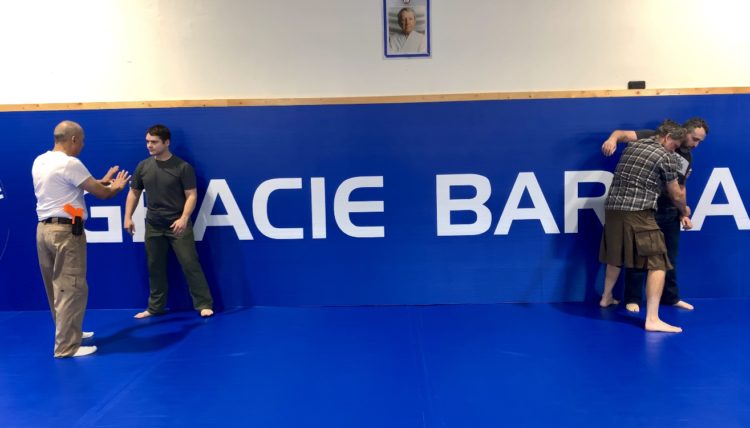
Another student, a very seasoned firearms instructor, didn’t even realize he was constantly looking for his gun under a little pressure.
During another scenario, neither of the assailants were armed with one completely out of the picture. He was only suited up in the Spartan Training Gear but never committed any form of assault. Our armed citizen shot both the assailant and the one out of play because he assumed, the 2nd guy would attack him too.
This one was taken quite hard on him, but he was thankful this was an error in judgment done in the mat room as opposed to being assessed by a District Attorney in the courtroom.
In the last evolution, I gave the “bad guy” student the instruction to continue to attack the “good guy” student no matter how many rounds he got off. This did not go as expected because our bad guy stopped when the UTM impacted his helmet. When I asked him why did he stop? He replied that he had been shot in the head. We talked about quite a few situations where people, not just bad guys but people living even after being shot in the head.
The Unseen and Unknown Lesson of 1986:
One thing I’d like to mention here that I forgot to bring up in the course is the 1986 Miami Gunfight. While the lessons from the firefight itself are truly the most relevant lessons anyone operating at any capacity could learn from, the most overlooked aspect of that event was the shooting of Jose Collazo.
Mr. Collazo grappled over the gun (after already being shot). When he initially grabbed the gun in Michael Platt’s hand. Mr. Collazo moved the gun over one shoulder with one round discharging, the same thing occurred on the opposite side but then Platt yanked the gun back which facilitates a course correction and orients the muzzle back on target before the third and final shot in the grappling exchange hit him in the head.
Mr. Collazo then crawled 3 miles on his hands and knees to help. It’s only in the movies where one shot makes the bad man go away.
This is probably the most infamous gun grappling case documented that went largely overlooked. I can only imagine how often this was/is the case over the years to the current day.
Hopefully, this material starts becoming more and more common for even the beginner so we all may have a better eye for reading between the lines.
Special Thanks to:
TDR Training for their help and support on the range.
Fabiana Borges and Gracie Barra Boerne for the beautiful training facility.
Red Beard Combatives and Hill Country Combatives. Too much to list. I hope to be half as good as you guys one day.
Matt Larsen. My greatest mentor and one of my best friends.
Green Ops and Green Ops Cadre. The most talented collective group a man could ever be part of. You guys inspire me to push to a higher level each day.
The students. You men have earned your place as true tacticians and gun FIGHTERS with #DeedsOfArms
